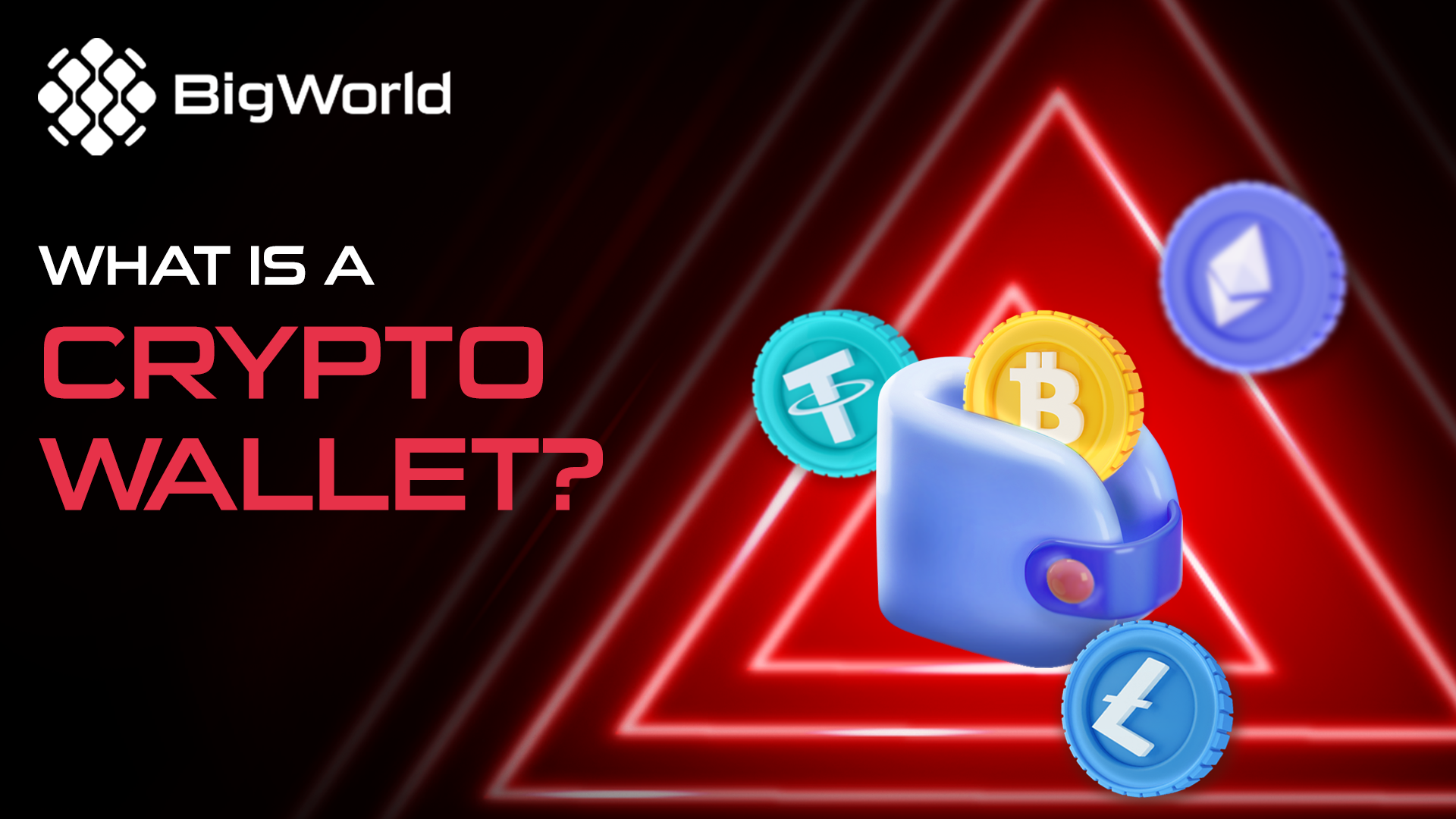What Is a Crypto Wallet? A Guide to Choosing the Right One for You

In the digital age, managing your cryptocurrency securely is just as important as the assets themselves. Crypto wallets have emerged as essential tools for safeguarding digital currencies, offering users full control over their holdings. Whether you're a seasoned trader or a crypto newcomer, understanding how these wallets function and selecting the right one is crucial for your journey in the crypto space. In this article, BigWorld explores the essential differences between hot wallets and cold wallets, helping you make informed decisions for managing your crypto assets safely and efficiently.
1. Understanding Crypto Wallets and Their Role

A crypto wallet is a tool that securely stores, sends, and receives cryptocurrencies. Unlike traditional wallets that hold physical money, crypto wallets store private keys—digital credentials that grant access to your assets on the blockchain.
These wallets give users full control over their funds, ensuring secure and independent management without relying on intermediaries. With options like mobile apps, hardware devices, or desktop software, users can choose between convenience or heightened security based on their needs. Understanding how these wallets work is essential for navigating the crypto space safely.
2. Types of Crypto Wallets: Hot Wallets vs. Cold Wallets
Crypto wallets can be categorized into two main types: hot wallets and cold wallets. Understanding their differences will help you choose the one that best suits your needs.
2.1. Hot Wallets
Hot wallets are connected to the internet, making them user-friendly and ideal for frequent trading or daily transactions.

Hot wallets stand out for their accessibility and convenience, making them ideal for users looking to engage actively in the crypto market:
- Easy to set up and access.
- Ideal for quick transactions.
- Often available as mobile apps, browser extensions, or online platforms.
However, being connected to the internet also exposes hot wallets to potential threats, making security a significant concern:
- Higher risk of cyberattacks and hacking attempts.
- Security largely depends on user vigilance and password management.
Popular Hot Wallets:
- MetaMask: Seamlessly integrates with decentralized applications (dApps).
- Trust Wallet: Supports numerous cryptocurrencies and dApps.
- Coinbase Wallet: A user-friendly option for beginners.
2.3. Cold Wallets

Image source: wired
Cold wallets operate offline, making them more secure against online threats. They’re a preferred choice for safeguarding large holdings over the long term.
Cold wallets offer unmatched security for long-term storage:
- Strong protection from internet-based threats.
- Ideal for secure storage of substantial assets.
However, their focus on security can make them less practical for day-to-day use:
- Less convenient for frequent trading.
- May require technical know-how for setup and use.
Popular Cold Walđang lets:
- Ledger Nano S/X: Offers robust security features with Bluetooth functionality.
- Trezor Model One/T: Provides an intuitive user experience with touchscreen options.
Read more: Understanding Layer 0: The Foundation for Multi-Blockchain Solutions | TheBigWorld
3. Popular Crypto Wallets in the Market
Here are some widely recognized wallets used by crypto enthusiasts:
Ledger Nano X: A popular cold wallet known for its high security and Bluetooth functionality.
MetaMask: A widely used hot wallet that integrates seamlessly with decentralized applications (dApps).
Trust Wallet: Supports a wide range of cryptocurrencies and offers easy access to dApps.
Trezor Model T: A cold wallet with a touchscreen interface for enhanced user experience.
4. Security Tips for Using Crypto Wallets
Protecting your digital assets requires diligence and smart security habits. Here are essential tips to enhance wallet security:
Use Strong Passwords: Choose complex passwords and change them regularly.
Enable Two-Factor Authentication (2FA): Add an extra layer of security to your wallet.
Backup Your Recovery Phrase: Store it securely offline in multiple locations.
Keep Software Updated: Regular updates help protect against security vulnerabilities.
Be Cautious of Phishing Scams: Always verify the authenticity of websites and wallet apps.
Consider Using Cold Storage: For large amounts of cryptocurrency, cold wallets offer better security.
Learn more: AI for Blockchain Security: Enhancing Decentralized Networks Against Cyber Threats | TheBigWorld
5. Final Thoughts
By understanding different wallet types and adopting security best practices, you can confidently navigate the evolving world of cryptocurrency. Whether you prioritize convenience or security, choosing the right wallet ensures your digital assets remain safe while empowering you to explore the endless possibilities of the crypto landscape.
Want to explore more about the world of Web3? Discover our in-depth guides: What Is The Metaverse? | TheBigWorld
Top 5 Blockchain Projects for Q4 2024 | TheBigWorld


